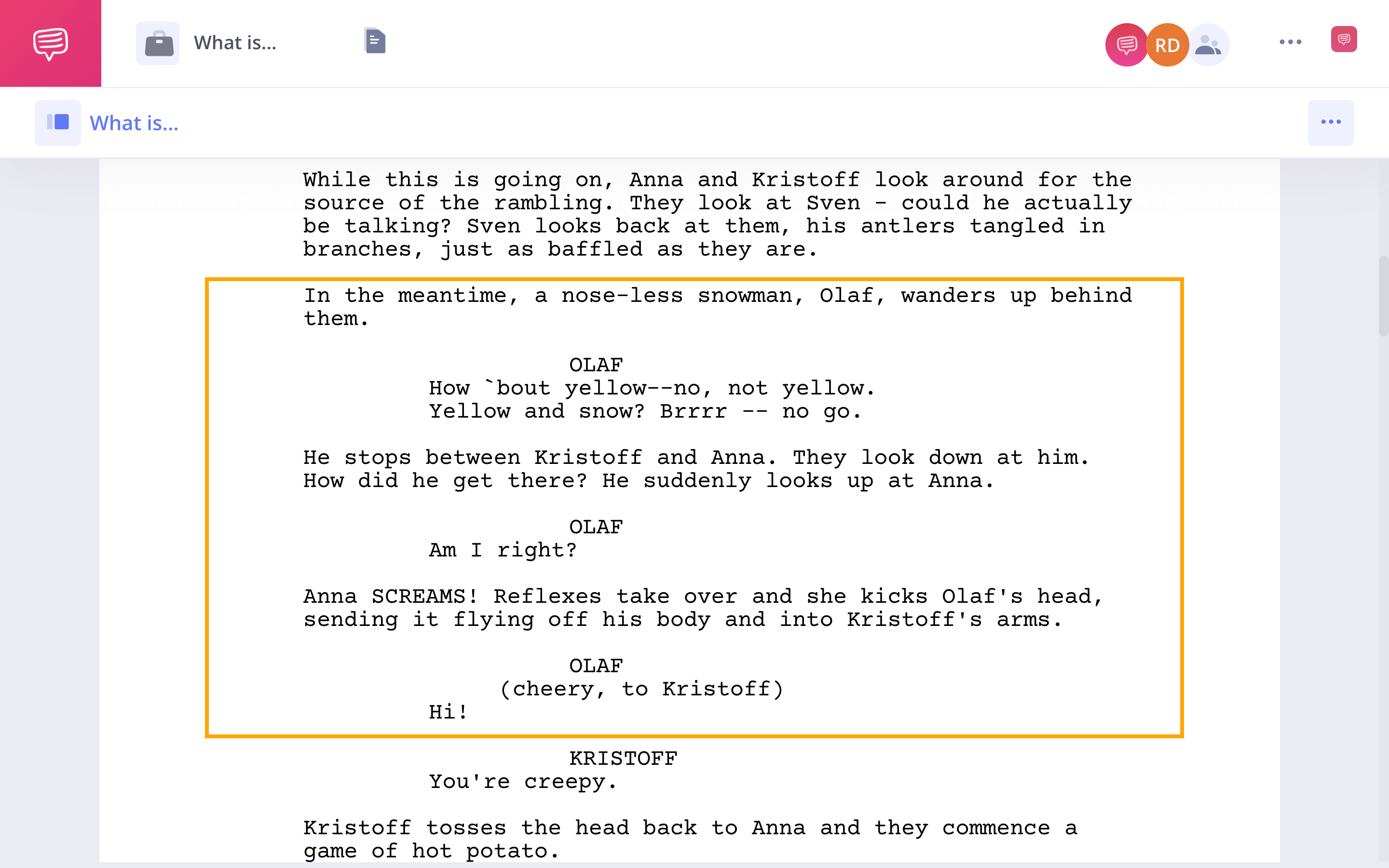When looking at some of cinema and literature’s most iconic characters, it’s easy to find ones that are non-human. Animals, androids, and other non-human characters, however, have somehow won our hearts over in countless tales. This is largely due to the fact that these non-human characters are given human traits, otherwise known as anthropomorphism. What is anthropomorphism used for? Let’s define anthropomorphism and its function in the world of storytelling.
What is Anthropomorphism in Writing?
First, let’s define anthropomorphism
Anthropomorphism can be a mouthful to say. Let’s start by breaking down the different parts of the word. Then, we'll identify the anthropomorphism definition to better understand it.
ANTHROPOMORPHISM DEFINITION
What is anthropomorphism?
Anthropomorphism is the attribution of human traits and characteristics to non-human subjects. These human traits are often things like emotion, behavior, and communication. The term derives from the Greek "ánthrōpos" meaning “human” and morphē or “form.” Anthropomorphism is often studied in psychology such as when humans anthropomorphize their pets. It is also a valuable literary device that is used in both cinema and literature.
Anthropomorphism examples in cinema:
- Nemo and Dory in Finding Nemo
- Wilson in Cast Away
- Aslan in The Lion, the Witch, and the Wardrobe
Now that we have a basic understanding of the definition, let's look at some examples of this technique.
Define Anthropomorphism with Examples
Anthropomorphism examples
Anthropomorphism can be found in all types of writing as a way to liven up and further engage the audience. Let’s take a look at an example.
In one of the best animated movies of all time Frozen, anthropomorphism is used to bring a snowman named Olaf to life. Without this literary device, Olaf would not be as amusing and entertaining in this fantastical film.
We brought the Frozen screenplay into the StudioBinder screenwriting app to break down this example. Notice how Olaf's dialogue is just as natural and charismatic as any of the human characters.
An example in Frozen • Read Frozen Anthropomorphism Example
Another example can be found in the novel The Lion, the Witch and the Wardrobe by C.S. Lewis. When describing Aslan, Lewis anthropomorphizes the animal of a lion to be a king.
- "Is-is he a man?" asked Lucy.
"Aslan a man!" said Mr Beaver sternly. "Certainly not. I tell you he is the King of the wood and the son of the great Emperor-beyond-the-Sea. Don't you know who is the King of Beasts? Aslan is a lion - the Lion, the great Lion."
"Ooh!" said Susan, "I'd thought he was a man. Is he - quite safe? I shall feel rather nervous about meeting a lion."
"That you will, dearie, and no mistake," said Mrs Beaver; "if there's anyone who can appear before Aslan without their knees knocking, they're either braver than most or else just silly."
"Then he isn't safe?" said Lucy.
"Safe?" said Mr Beaver; "don't you hear what Mrs Beaver tells you? Who said anything about safe? 'Course he isn't safe. But he's good. He's the King, I tell you."
The use of Aslan as a lion is symbolic because they are considered to be one of the kings of the wild.
Additionally, it is also a way to give prestige and strength to the character.
Related Posts
Differences Explained
Anthropomorphism vs personification
When we use anthropomorphism in a sentence, there is often confusion if we're actually talking about personification. However, these techniques have their own unique definition and application.
Personification is a literary device that gives human characteristics to nonhuman things or inanimate objects. This applies to animals, objects, or even a concept. Like anthropomorphism, personification can add life and energy to otherwise lifeless objects or subjects.
However, personification differs due to its figurative nature.
Personification may figuratively give human-like characteristics to non-human subjects. On the other hand, anthropomorphism literally gives human characteristics to these subjects.
Related Posts
Anthropomorphism Meaning In Action
What is anthropomorphism used for?
What is the meaning of anthropomorphism for writers and how can they apply it? This technique can be used for a variety of reasons depending on the intent of the writer. Let’s take a look at a few effective ways to use it.
Relatable characters
Anthropomorphizing non-human characters can better allow an audience to relate to those characters.
A key to great storytelling is emotionally engaging an audience. And this technique creates emotional connection when we notice human qualities in a non-human subject.
Storytelling possibilities
Anthropomorphism creates more possibilities as to what can be used as characters. Because of this, writers can also explore new environments, new plots, and new worlds to tell their story.
For example, a story that takes place in the ocean would be difficult to achieve without this device. This is the only way the story of Finding Nemo could be created and be so captivating.
Symbolism
Another great reason to utilize anthropomorphism is to create strong symbols. Often, we have an association with non-human subjects like animals. Using this technique affects how we see a character.
For example, in Kurt Vonnegut’s satirical novel Slaughterhouse-Five uses pigs as characters that symbolize the elitist ruling class.
Anthropomorphism can be an incredibly useful literary device to make a story more engaging and immersive. It also allows writers to explore more worlds and subjects that would otherwise not be possible. When ideating a story, be sure to explore what anthropomorphism can open up for you.
Related Posts
Up Next
How to use personification
Like we mentioned above, anthropomorphism holds similarities to the literary device personification. If you’re interested in more ways to liven up your writing, check out our next article where we dive into personification, examples, and its uses for a writer.

